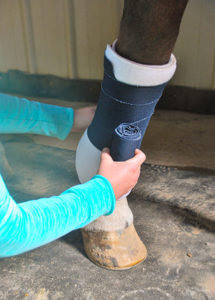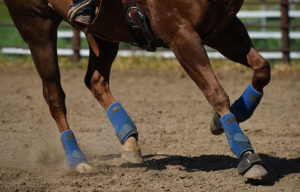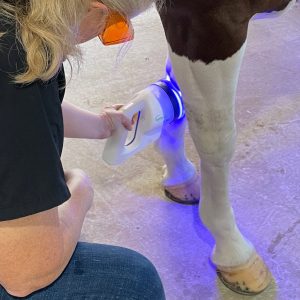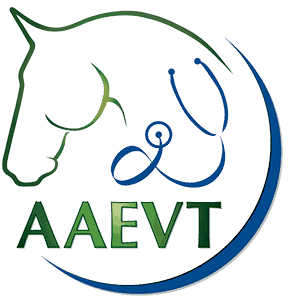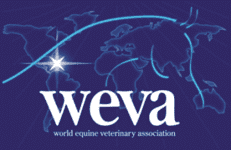Spring Horse Feeding Considerations
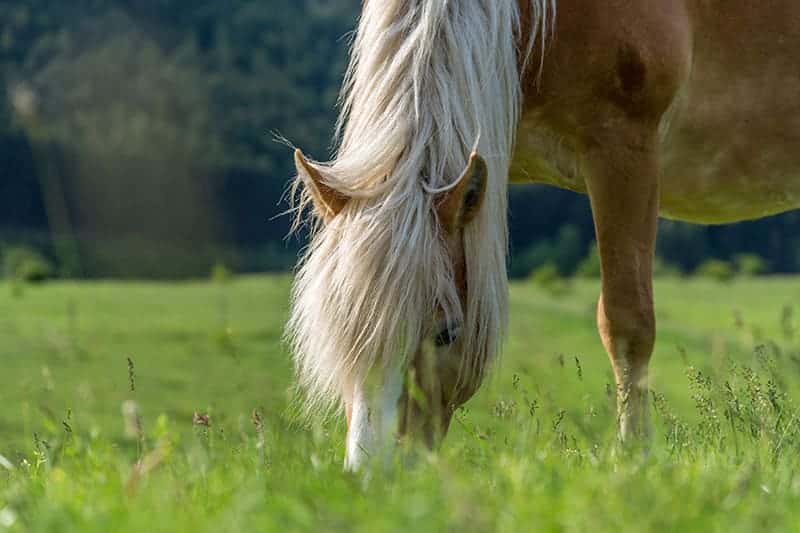
Longer days and warmer temperatures can only mean one thing: Spring is on its way. As spring arrives, pastures will start to grow, horses’ long winter hair coats will begin to shed out, and many riders will start spending more time in the saddle. Here are some points to consider about your horse’s diet to help him transition smoothly from winter to spring.
Monitor Body Condition
Some horses will have dropped some weight over the winter, and others might have gained a bit too much. As such, it’s important to evaluate his body condition before altering your horse’s feeding regimen to ensure he’s not consuming too much or too little food to start the spring.
The best way to monitor a horse’s weight without using a scale is by body condition scoring. This system estimates the fat present on the horse’s body and can help horse owners adjust their feeding programs accordingly. Provide extra calories to horses that could stand to gain a few pounds, and consider restricting calories for overweight animals.
Forage
The most important part of a horse’s feeding program is adequate amounts of fiber from forage. During the winter months, when pastures lay dormant, owners typically provide horses with hay or other fibrous feed sources (such as beet pulp). But in spring, the transition from harvested forage sources back to pasture grasses can begin.
Monitor a horse’s body condition score carefully to ensure he’s not consuming too much green grass. Early spring pasture tends to be higher in most nutrients compared to other times during the year. This is especially true of sugar and starch, or calories. Therefore, manage equids that are adversely affected by high sugar and starch levels (such as overweight horses or those with pituitary pars intermedia dysfunction, or equine Cushing’s disease; insulin resistance; or laminitis) carefully during the spring. Employ reduced turnout time or a grazing muzzle to help limit pasture intake for at-risk horses. (Editor’s note: For more information on safely turning horses out on spring pasture, see Spring Turnout Tips for Horses.)
Shedding and Hair Coat Quality
Typically, horses begin to shed in response to increased day length in spring. Proper grooming can hasten the shedding process, but nutrition plays a role in shedding as well. Low dietary levels of some nutrients can affect both the shedding process and the quality of a horse’s hair coat.
For instance, protein and amino acid deficiencies have been shown to slow shedding. On the other hand, essential fatty acids, including omega-3 and -6 fatty acids—found in fresh pasture and some grains such as flaxseed and rice bran—can help improve hair coat quality. Adding fat to your horse’s diet during the winter can help maintain his coat condition prior to fresh pasture growth.
Kristen M. Janicki, MS, PAS
Concentrates
Adjust the type and amount of concentrate your horse consumes based on his level of work and body condition.
As pastures grow and horses’ grass intake increases, owners might consider decreasing the amount of grain their horses consume daily due to animals’ increasing body condition. However, calories are only one component of grain: By reducing the volume being fed each day, you could inadvertently be limiting your horse’s intake of other essential nutrients such as amino acids, minerals, and vitamins.
Read the feed bag or tag to determine the minimum amount of grain that should be fed per day in order to meet your horse’s nutrient requirements. If calories are a concern, consider switching that horse to a ration balancer pellet. (Editor’s note: For more information on ration balancer pellets, see Equine Ration Balancer Pellets Explained.)
Water
Regardless the season, horses always need access to fresh water. But as ambient temperatures increase and riders begin spending more time in the saddle, horses will require even more water to replenish losses from sweat.
In addition to water, horses also lose electrolytes, such as potassium, sodium, and chloride, when they sweat. Owners might need to supplement those minerals via a mineral block, supplement, or electrolytes.
Take-Home Message
With the emergence of spring, horse owners should monitor their horses carefully for changes in body condition and adjust their animals’ feeding programs accordingly. If questions or concerns arise, contact a veterinarian or equine nutritional advisor.
Written by:
Kristen M. Janicki, MS, PAS
Related Articles
Stay on top of the most recent Horse Health news with



